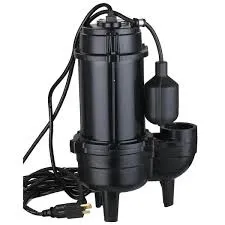Maltese
- Afrikaans
- Albanian
- Amharic
- Arabic
- Armenian
- Azerbaijani
- Basque
- Belarusian
- Bengali
- Bosnian
- Bulgarian
- Catalan
- Cebuano
- Corsican
- Croatian
- Czech
- Danish
- Dutch
- English
- Esperanto
- Estonian
- Finnish
- French
- Frisian
- Galician
- Georgian
- German
- Greek
- Gujarati
- Haitian Creole
- hausa
- hawaiian
- Hebrew
- Hindi
- Miao
- Hungarian
- Icelandic
- igbo
- Indonesian
- irish
- Italian
- Japanese
- Javanese
- Kannada
- kazakh
- Khmer
- Rwandese
- Korean
- Kurdish
- Kyrgyz
- Lao
- Latin
- Latvian
- Lithuanian
- Luxembourgish
- Macedonian
- Malgashi
- Malay
- Malayalam
- Maltese
- Maori
- Marathi
- Mongolian
- Myanmar
- Nepali
- Norwegian
- Norwegian
- Occitan
- Pashto
- Persian
- Polish
- Portuguese
- Punjabi
- Romanian
- Russian
- Samoan
- Scottish Gaelic
- Serbian
- Sesotho
- Shona
- Sindhi
- Sinhala
- Slovak
- Slovenian
- Somali
- Spanish
- Sundanese
- Swahili
- Swedish
- Tagalog
- Tajik
- Tamil
- Tatar
- Telugu
- Thai
- Turkish
- Turkmen
- Ukrainian
- Urdu
- Uighur
- Uzbek
- Vietnamese
- Welsh
- Bantu
- Yiddish
- Yoruba
- Zulu
Telephone: +86 13120555503
Email: frank@cypump.com
Dec . 18, 2024 07:57 Back to list
'design and functionality of a double action suction pump for ...'
Design and Functionality of a Double Action Suction Pump
The double action suction pump is a remarkable piece of engineering that enhances the efficiency of fluid transfer in various applications. This type of pump operates by enabling fluid movement through a dual-action mechanism—suction and discharge—simultaneously on both sides of its piston. This article delves into the design, functionality, and applications of double action suction pumps, illustrating their significance in many industrial sectors.
Design Features
The design of a double action suction pump typically includes a cylinder with a piston that moves back and forth. The key components include
1. Cylinder and Piston The cylinder is usually made of robust materials like cast iron or stainless steel to withstand high pressures and abrasive fluids. The piston, also designed for durability, creates a barrier to separate the fluid chamber from the atmospheric side.
2. Inlet and Outlet Valves Positioned strategically, these valves facilitate the entry and exit of fluid. They are designed to prevent backflow, ensuring unidirectional flow of the liquid.
3. Connecting Rod and Crank Mechanism The connecting rod links the piston to the crank mechanism, which converts rotational motion into linear motion. This complexity allows the piston to move and create suction on one stroke while discharging fluid on the other.
4. Sealing Mechanisms Effective seals are vital to prevent leakage and maintain pressure. Different sealing solutions are employed based on the properties of the fluids being pumped, ensuring reliability and longevity.
Functionality
The double action suction pump operates using the principles of pressure differentials and mechanical movement. The process begins as the piston moves outward in the cylinder, creating a vacuum that draws fluid into the chamber through the inlet valve. Once the piston reaches its maximum extension, it begins to retract, causing the previously drawn fluid to be pressed out through the outlet valve simultaneously.
'design and functionality of a double action suction pump for ...'

This dual action leads to increased efficiency, as fluid flow is continuous, minimizing the pulsation that is often prevalent in single-action pumps
. The result is a smooth, consistent output—a critical feature for processes that require stable fluid delivery, such as in chemical processing or wastewater treatment.Advantages
1. Increased Efficiency The ability to draw in and discharge fluid in both strokes ensures a steady and more efficient flow rate compared to single-action pumps.
2. Versatility Double action suction pumps can handle a wide range of liquids, including viscous and abrasive substances, making them suitable for various industries, including pharmaceutical, food and beverage, and heavy manufacturing.
3. Reduced Wear and Tear With lesser pulsation and smoother operation, these pumps experience reduced mechanical stress, leading to a longer operational lifespan.
4. Compact Design Many double action suction pumps are designed to be compact, allowing for easy integration into existing systems without taking up excessive space.
Applications
Double action suction pumps are utilized in numerous fields
- Chemical Industry For transferring chemicals and solvents where precise flow control and non-contamination are vital. - Food Industry In processes requiring sanitary conditions and the ability to handle viscous substances like syrup or sauces. - Water Treatment For moving wastewater in treatment facilities where efficiency and reliability are crucial.
In conclusion, the design and functionality of double action suction pumps offer substantial benefits across various sectors. Their advanced engineering enables high efficiency, versatility, and durability, making them a preferred choice for industries requiring reliable fluid transfer solutions. As technology advances, it is likely that the design of these pumps will continue to evolve, further enhancing their efficiency and application range.
-
ISG Series Vertical Pipeline Pump - Chi Yuan Pumps Co., LTD.|High Efficiency, Energy Saving, Low Noise
NewsJul.30,2025
-
ISG Series Vertical Pipeline Pump- Chi Yuan Pumps|High Efficiency&Low Noise
NewsJul.30,2025
-
ISG Series Vertical Pipeline Pump-Chi Yuan Pumps Co., LTD.|High Efficiency&Energy Conservation
NewsJul.30,2025
-
ISG Series Vertical Pipeline Pump - Chi Yuan Pumps Co., LTD.|Advanced Hydraulic Design&Energy-Efficient Solutions
NewsJul.30,2025
-
ISG Series Vertical Pipeline Pump - Chi Yuan Pumps Co., LTD.
NewsJul.30,2025
-
ISG Series Vertical Pipeline Pump - Chi Yuan Pumps Co., LTD.|energy-efficient fluid handling&industrial durability
NewsJul.30,2025










